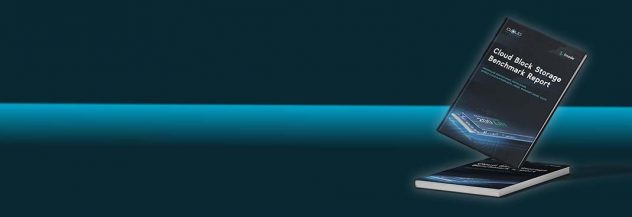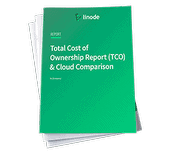Multicloud vs. Hybrid Cloud: Differences Explained
Traducciones al EspañolEstamos traduciendo nuestros guías y tutoriales al Español. Es posible que usted esté viendo una traducción generada automáticamente. Estamos trabajando con traductores profesionales para verificar las traducciones de nuestro sitio web. Este proyecto es un trabajo en curso.
In the last couple of years, the cloud has become a ubiquitous term and piece of technology. But depending on who you ask, what is meant by “the cloud” can vary dramatically. For some, the cloud is only a way to store files and photos on a third-party service. For others, the cloud is a means to sync data between phones and desktops. Others look at the cloud as a method of serving applications to consumers and customers. As you keep climbing up the IT ladder, the definition gets more granular and more complicated.
Why? Because the technology driving the cloud becomes more complicated.
For businesses, the cloud is a very important piece of the puzzle. One that makes it possible for companies to better monetize their offerings, save money, and deliver reliable services that scale to meet demand. It’s on this level that things become more complex. Part of the reason for this confusion is two different types of cloud technologies that are often mistaken with one another.
Hybrid vs. multicloud environments are quite pervasive in the IT landscape. There are differences between hybrid and multicloud deployments that are important to understand when a company designs its cloud strategy.
What is Multicloud Computing?
Multicloud deployment is often preferred by businesses, sometimes without the business recognizing it is adopting the technology, but doing so because it addresses the business requirements. It’s association by need, not design.
The defining aspect of the multicloud setup is that it makes use of multiple public cloud services. These services often come from different providers, all of which make their offerings publicly available. So your company might use any combination of AWS, Google Cloud, Azure, Linode, Digital Ocean, or RackSpace. For example, your groupware might be hosted on Google Cloud (such as Google Workspaces), your mobile applications on AWS, your containerized applications on Linode, your website on Azure, and your storage on Digital Ocean. That’s a widespread multicloud deployment, but it illustrates how multicloud can work.
One reason to spread your technology net so wide is because one cloud provider doesn’t support all of the technologies your business requires to function. Another reason could be that it’s more cost-effective to run a particular type of workload on one platform than the others.
IT decision makers align company business technology adoption with a need and solve that need with a solution. In the modern IT landscape, that solution is often handled via the cloud. Given how many pre-built services exist within the cloud, the decision is not difficult. Problem X + Cloud Solution Y = Reliable Workflow.
What is Hybrid Cloud Computing?
Hybrid cloud computing makes use of a private cloud in addition to public cloud hosting platforms. In this environment, both the public and the private cloud environments are managed as one.
Hybrid cloud computing is more complicated than multicloud for two reasons:
- You must include a private cloud option.
- You must be able to seamlessly combine both private and public options.
For example, you have a service that you run on-premise. It’s a containerized application, run via a private cloud, and your container database is served up via your in-house datacenter. That application runs well during non-peak periods. But during peak demand, your private cloud isn’t capable of scaling to meet the higher demand.
To make that work, you employ frameworks and services that automatically shift the load from your in-house private cloud to your public cloud to handle the added demand. Once peak times end, the load shifts back to your private cloud.
As far as your customer is concerned, nothing changes. For your business, considerable effort goes into making that a reality because there are a lot of moving pieces required for this to work smoothly. When this type of deployment functions as expected, it’s a game-changer. Service is seamless and the technology making it happen is transparent.
Multicloud vs. Hybrid Cloud
These two technologies are similar, but their differences matter when planning your cloud strategy.
Similarities Between Hybrid Cloud and Multicloud
The obvious similarity in hybrid cloud vs multicloud is that they both make use of public cloud technology. Without public cloud technology, neither of these types would exist. Because they both use public clouds, these two types of deployments co-exist well. For example, your business can make use of a multicloud deployment for one department, or location, and a hybrid cloud for another. Those two deployments are able to communicate with one another.
A hybrid cloud can become a multicloud deployment if the hybrid cloud uses multiple public clouds and multiple private clouds combined.
Difference Between Hybrid Cloud and Multicloud
The biggest difference between the multicloud and hybrid cloud is that in multicloud only public clouds are used and in the hybrid cloud, a mixture of public and private clouds are used. It’s that private cloud that makes the difference. The difference is more telling than you might think.
Any business can quickly get up and running with a multicloud environment with little effort because a third party takes care of almost everything. For example, with Google Workspaces, the only thing your IT staff does is add branding, usernames, and policies.
Consider if you opt to pull a particular functionality in-house with a private instance of Nextcloud. Now your IT department has to deploy the platform, configure it to function within your business, and then add branding, users, etc. After that, you have to connect that private cloud so it functions with your public cloud tools. Hybrid cloud environments are just more complex.
It’s important to clarify one thing: A private cloud doesn’t have to be hosted in-house. Most third-party cloud services can provide you with a private cloud option. The difference here is that although the public has access to the third-party provider, they do not have access to the private cloud that the service provides you.
Pros and Cons of Hybrid Cloud and Multicloud
Multicloud is considerably easier to deploy and use. Typically once your multicloud environment is up and running, it is very reliable because those third-party cloud vendors have a vested interest in keeping your business functioning. That equates to your IT staff being able to spend their precious time doing more important things.
When comparing multicloud vs hybrid cloud, there’s the issue of cost. This is where the concept of Cloud Bursting comes into play. This is when you have applications and services that normally run on your private cloud but, when demand increases, the applications/services automatically “burst” out to your public cloud space to meet demand. There are three types of cloud bursting: distributed load balancing (used to simultaneously provision cloud resources), manual bursting (used to manually provision and deprovision cloud resources and services), and automated bursting (used to automatically provision and deprovision cloud resources and services). This saves you considerable money, increases the efficiency of operations, and improves performance and productivity of your deployments. Cloud bursting is a viable solution for applications that must read data from storage, database applications that require sharding for higher performance, applications that depend on massive amounts of data, and AL/ML models. However, if your applications rely on low-latency or you have simulations that create large amounts of node-to-node traffic, cloud bursting might not be a great fit. Other issues to factor in with cloud bursting are the complications involved in setting up the services, and keeping them running smoothly. You need to implement observability services and tools to keep close watch.
Private clouds, especially those you run either in-house or on a third-party host, are significantly cheaper than their public counterparts. Think about it this way: You can pay for each employee to use Google Workspaces, or you can deploy Nextcloud in-house and use it for free. You are only paying the premium price when it’s absolutely necessary.
The downfall of such a setup is that it’s complicated to deploy. You need an IT staff with considerable skills to get the hybrid cloud up and running and maintain it.
Another benefit of the hybrid cloud is that it allows your business to keep sensitive information in-house. You might have client information or company IP that you don’t want to find its way into the public. For such a case, the hybrid cloud is the best option, because you keep control over what happens with that data.
Control is another benefit of the hybrid cloud. With a multicloud environment, you are only able to control so much of the platform because your third-party provider is only willing to hand over so much configuration to your company and staff. With the hybrid cloud, at least on the private cloud end, you are in full control. This is especially true when using open-source solutions on your private cloud, where your in-house developers can dive into the code and make changes to perfectly suit your company.
Hybrid Cloud vs Multicloud: Which Model Is Right For Me?
You can boil this decision down by answering a simple question. Decide whether cost savings, simplicity, or control is most important to your company. If your business is looking to keep costs down, while keeping control of your data and customizations, then a hybrid cloud is probably the best option. However, if your business just needs everything up and running, without worrying about downtime, maintenance, or staffing, the multicloud environment might be the perfect solution. Keep in mind that in the long run the multicloud environment will probably cost you more and won’t offer you nearly the control you have with a hybrid cloud.
Conclusion
The type of cloud strategy that you use is a decision to make upfront. It’s important to understand that you can, at any time, switch routes. If you already have a multicloud environment, you can layer on a private cloud and turn the multi to a hybrid cloud deployment. Cloud host providers like Linode make adopting either as simple as signing up for your account, deploying your services, and then bridging those together with your other cloud deployments.
There’s plenty of documentation to help you make this a reality.
If you find the multicloud costs too much, or that it does not give you the control or security your company demands, you’re just a private cloud deployment away from solving that problem.
This page was originally published on





